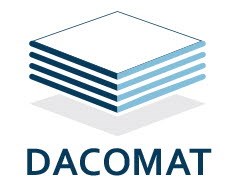Objectives
Society is dependent upon the continuous functioning of critical infrastructures such as road bridges and energy supply. These infrastructures are exposed to high loads and harsh environmental conditions through their lifetime in operation and materials failures lead to down time having vast negative effects on productivity and well-being in society in terms of lost time, shortened life cycles and increased service costs.

Scientists and engineers face the challenge to develop more durable materials compatible with industrial standards in an economically viable way. Composites represent attractive materials and are increasingly used for structural applications due to their low weight, high strength and stiffness and high environmental resistance. However, composites can suffer from sudden brittle failure mainly due to production defects and damages due to excessive loads. This is currently handled by strict quality and process control from manufacturers, resulting in high production costs which can represent a barrier to introduction and development of composites in a wide range of applications.
The general objective of DACOMAT is to develop more damage tolerant and damage predictable low cost composite materials in particular aimed for used in large load carrying constructions like bridges, buildings, wind-turbine blades and off shore structures. The developed materials and condition monitoring solutions will provide high tolerance for manufacturing imperfections and high capacity to sustain damages. This will enable large composite structures to be manufactured and maintained at low cost.
The developed materials will also have additional applications such as marine structures, marine vessels, pipes, power transmission towers.
Outcomes of the Project:
- Composite materials and structures with significantly improved durability and damage tolerance
- Guidelines and modeling tools for reliable design of critical load carrying composite structures
- Guidelines for materials qualification
- Structural health monitoring and damage assessment solutions
- LCCA & LCA methodology for large composite constructions
The work is divived into the following work packages
WP1 Concept Modelling
WP2 Materials development
WP3 Materials Testing
WP4 Composites manufacturing and demonstration
WP5 Structural Health Monitoring
WP6 Guidelines, standardisation and sustainability
WP7 Exploitation, dissemination and external communication
WP8 Project Management
Demonstration of the material performance in relevant environment will be conducted for two business cases:
wind turbine blades and road bridges.

